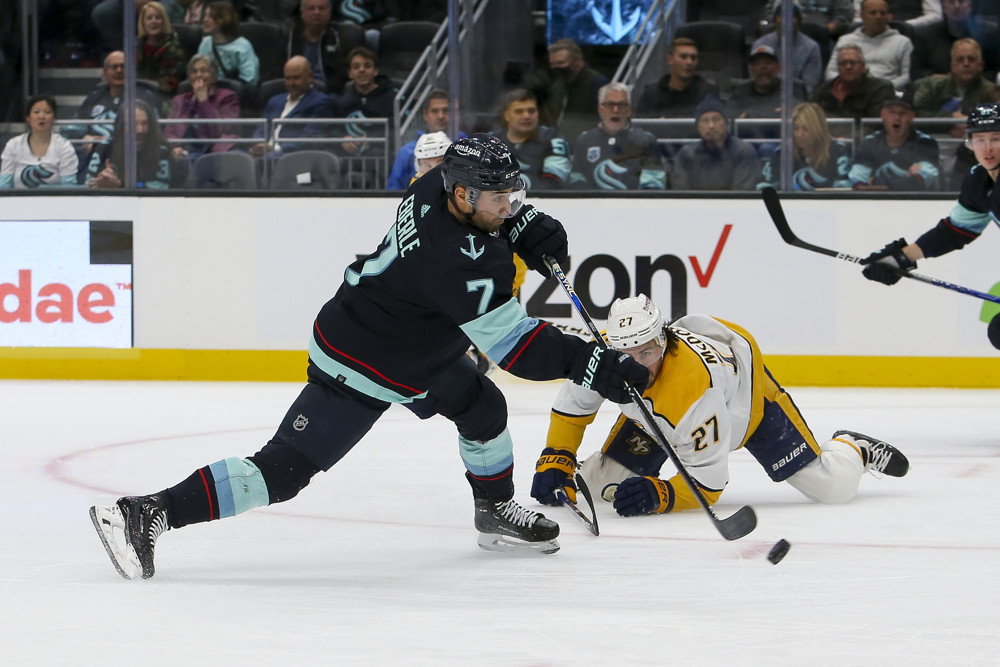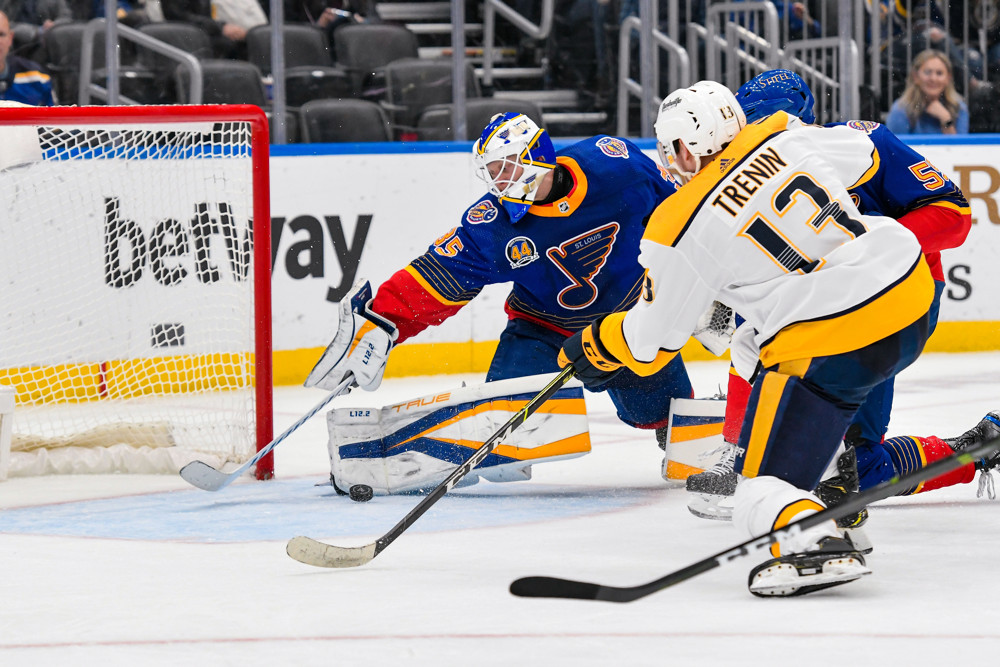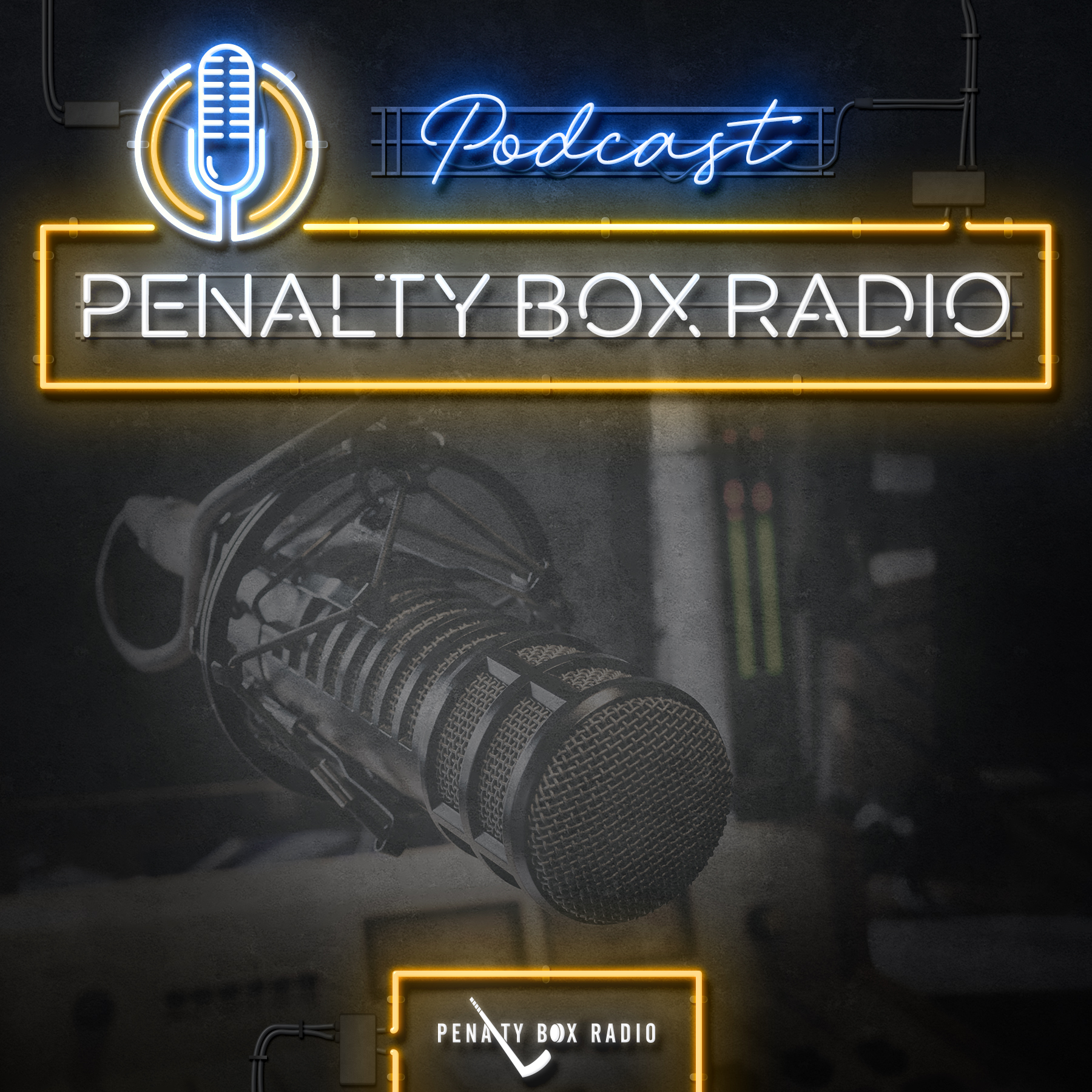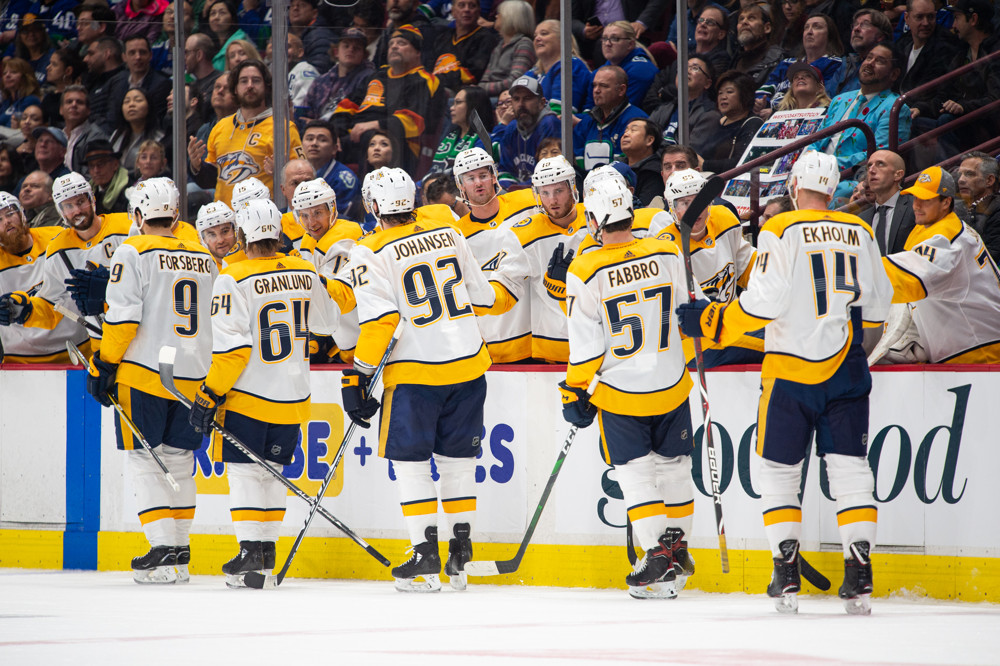 Sometime, late last night, the Nashville Predators’ chartered plane landed east of downtown. The players, many of whom had probably been sleeping or quietly listening to music, collected their bags and filed down the stairs. In the parking lot, there were no fans waiting for autographs or to chant their support. In relative silence, each member of the team walked through the frigid air to their expensive cars and drove home.
Sometime, late last night, the Nashville Predators’ chartered plane landed east of downtown. The players, many of whom had probably been sleeping or quietly listening to music, collected their bags and filed down the stairs. In the parking lot, there were no fans waiting for autographs or to chant their support. In relative silence, each member of the team walked through the frigid air to their expensive cars and drove home.
I sincerely hope the players were able to shake the memories of the past three games, greet their loved ones and their dogs, and get some sleep.
I cannot say the same for the coaching staff, however. I hope every one of them was kept awake by a little voice in their head, chanting “0 for 15, 0 for 15.”
 Over the past three games, the league’s worst power play was even more tragic than usual: zero percent. I’d rather they didn’t forget that quickly. There’s a reason that’s so annoying, and it comes from basic math. The average power play percentage right now in the NHL is around 20%. What is 20% of 15, you ask? It’s 3. If Nashville had managed even an average power play performance over the past three games, it would have equated to an additional 3 goals – one per game. Considering they lost each of those games by a single goal, well, hopefully you see my point.
Over the past three games, the league’s worst power play was even more tragic than usual: zero percent. I’d rather they didn’t forget that quickly. There’s a reason that’s so annoying, and it comes from basic math. The average power play percentage right now in the NHL is around 20%. What is 20% of 15, you ask? It’s 3. If Nashville had managed even an average power play performance over the past three games, it would have equated to an additional 3 goals – one per game. Considering they lost each of those games by a single goal, well, hopefully you see my point.
Now, with my usual “the power play is a glaring problem that is not being addressed” introduction out of the way, let’s get to last night’s report cards. Keep in mind, all of the numbers below are taken from five-on-five situations only.
 Forwards
Forwards
A heavy blow was dealt before puck drop in the form of an injury update. One of Viktor Arvidsson’s thumbs is no longer intact, and he’ll be sidelined until January. For a healthy chunk of the season, Nashville’s first line has been the only one producing. It’s bad news when one of its members goes down.
Fortunately, Filip Forsberg and Ryan Johansen are an elite pair of players all on their own. What they get in Arvidsson is someone who can screen the goaltender, cause some chaos, and occasionally drop jaws himself. In his absence, we’ll likely see a handful of replacements at right wing. Against Arizona, the seat was kept warm by Kevin Fiala, who could probably use a dose of Johansen’s sweet, sweet passing ability.
The bad news for the Johansen line is that Arizona produced more shot attempts than Nashville with these three on the ice. In high-danger areas, where 92 and 9 excel, they failed to gain an advantage. All of this is pretty bad when you consider how offensively weighted their zone starts were. While Jordan Oesterle and Niklas Hjalmarsson have been a decent pairing this year, Laviolette somehow managed to keep his top line away from Ekman-Larsson and Demers. Still, they were outperformed.
With Fiala moved up, the second line was obviously tweaked as well. Calle Jarnkrok, who’s having a disappointing year so far, slotted in beside Kyle Turris and Craig Smith.
 This was a bizarre night from the Turris line. First things first, they did not take a single defensive zone faceoff at five-on-five. With that extra friendly assignment, they did produce a nice advantage in shot attempts. Unfortunately, they failed to record a single high-danger scoring chance. While they did have the most shared TOI with Arizona’s top defensive pairing, there was a decent stretch of time against the bottom pair as well. Overall, this line was a positive factor for the Predators, but they really need to be smarter about which shots they’re attempting. I’d quickly trade a handful of shot attempts for just one high-danger scoring chance.
This was a bizarre night from the Turris line. First things first, they did not take a single defensive zone faceoff at five-on-five. With that extra friendly assignment, they did produce a nice advantage in shot attempts. Unfortunately, they failed to record a single high-danger scoring chance. While they did have the most shared TOI with Arizona’s top defensive pairing, there was a decent stretch of time against the bottom pair as well. Overall, this line was a positive factor for the Predators, but they really need to be smarter about which shots they’re attempting. I’d quickly trade a handful of shot attempts for just one high-danger scoring chance.
Leading the way for the bottom six was the group of Colton Sissons, Nick Bonino, and Austin Watson. You might want to mark this day in your calendars, because I’m about to give Nick Bonino an A.

 This group really didn’t see much ice time at five-on-five. They saw even less offensive-zone ice time. Still, they took their limited minutes against high-quality competition and comfortably outperformed their opponents. They do get a bump for scoring the team’s only goal last night, hideous as it was. Congratulations line three, I am officially giving credit where it’s due.
This group really didn’t see much ice time at five-on-five. They saw even less offensive-zone ice time. Still, they took their limited minutes against high-quality competition and comfortably outperformed their opponents. They do get a bump for scoring the team’s only goal last night, hideous as it was. Congratulations line three, I am officially giving credit where it’s due.
Rounding out the forwards was the line of Miikka Salomaki, Frederick Gaudreau, and Ryan Hartman. Frankly, I think Hartman’s banishment to the bottom six is unwise. I’ve seen rumored explanations ranging from the banal to the sinister (that is, they’re trying to force him into a less expensive contract), but we’ll stay focused on last night for now.
 While I am impressed that they managed to produce ten shot attempts in just under four minutes, this was a very blah evening from the team’s designated blah line. They barely touched the ice, faced the easiest opponents available, and broke even in high-danger areas. Frankly, I wouldn’t be opposed to catapulting Hartman to the first line. He could really use the linemates and the ice time. That is, assuming he isn’t concussed (Josh Archibald will likely be sentenced to receiving a very stern look of disapproval from the Department of Player Safety for that hit, fear not).
While I am impressed that they managed to produce ten shot attempts in just under four minutes, this was a very blah evening from the team’s designated blah line. They barely touched the ice, faced the easiest opponents available, and broke even in high-danger areas. Frankly, I wouldn’t be opposed to catapulting Hartman to the first line. He could really use the linemates and the ice time. That is, assuming he isn’t concussed (Josh Archibald will likely be sentenced to receiving a very stern look of disapproval from the Department of Player Safety for that hit, fear not).
 Defensemen
Defensemen
The most pressing matter facing the Nashville Predators right now is getting P.K. Subban healthy. There is no reason he needs to be playing injured at this point in the season, but the team unquestionably hurts without him. He’s a defensive powerhouse and truly capable of negating any opposing skater the league has to offer. Fortunately, he’s just day-to-day at this point.
The “first” defensive pairing (usually more of a 1A/1B situation) was unchanged: Roman Josi and Ryan Ellis. In my opinion, this is shaping up to be their best defensive season as a pair. Against Arizona, they were certainly a positive factor, but failed to outperform in some key areas.

 Undeniably, Josi and Ellis dominated the shot attempt share. They produced a hefty 28 and allowed just 14. They were beaten in high-danger areas, though, indicating to me that they didn’t contribute to the right kinds of chances offensively. They managed to break even in goals against the Ex-Blackhawks line (featuring Richard Panik and Vinnie Hinostroza), who has been very mediocre this year. The “+14” bumps Nashville’s top pairing up to B territory. They did allow Arizona to score a shorthanded goal, but for the purposes of this assignment, we’re ignoring special teams.
Undeniably, Josi and Ellis dominated the shot attempt share. They produced a hefty 28 and allowed just 14. They were beaten in high-danger areas, though, indicating to me that they didn’t contribute to the right kinds of chances offensively. They managed to break even in goals against the Ex-Blackhawks line (featuring Richard Panik and Vinnie Hinostroza), who has been very mediocre this year. The “+14” bumps Nashville’s top pairing up to B territory. They did allow Arizona to score a shorthanded goal, but for the purposes of this assignment, we’re ignoring special teams.
Things get interesting with the second pairing. Nashville’s depth in the right-handed defensemen category is actually pretty weak, so they decided to just put two left-handers next to each other: Mattias Ekholm and fresh-from-IR Dan Hamhuis.
 Hamhuis has been a serviceable bottom-pair defenseman, but there has been little indication that he has much more to offer. Perhaps he did some soul-searching during his time off, or perhaps (most likely) Mattias Ekholm is very, very good at hockey. This pairing faced the best Arizona has to offer, and handily outperformed them in shot attempts and high-danger scoring chances. They didn’t produce any goals, but they were making all the right decisions. It was certainly an admirable performance.
Hamhuis has been a serviceable bottom-pair defenseman, but there has been little indication that he has much more to offer. Perhaps he did some soul-searching during his time off, or perhaps (most likely) Mattias Ekholm is very, very good at hockey. This pairing faced the best Arizona has to offer, and handily outperformed them in shot attempts and high-danger scoring chances. They didn’t produce any goals, but they were making all the right decisions. It was certainly an admirable performance.
Finally, we arrive at the subject that frequently serves as the team’s downfall: the third defensive pairing. Last night, it took form through Matt Irwin and Yannick Weber.
 Perhaps unsurprisingly, they were the only Nashville defensive pair to not record an advantage in shot attempts, though they did at least break even. Admirably, they held a pretty good line to just one high-danger scoring chance against. There’s really not much to see here, and the 2.0 GPA reflects that.
Perhaps unsurprisingly, they were the only Nashville defensive pair to not record an advantage in shot attempts, though they did at least break even. Admirably, they held a pretty good line to just one high-danger scoring chance against. There’s really not much to see here, and the 2.0 GPA reflects that.
 Goaltending
Goaltending
It’s fair to say that last night was a strange game. For one reason or another, Arizona is just one of those opponents for Nashville. Many of us are nervously waiting for Pekka Rinne to regress back to Earth (hopefully before the playoffs this year), and it’s possible that we started to see a bit of that against the Coyotes.
The show was stolen by Darcy Kuemper in the opposite crease, but Rinne made some very good saves as well to keep the Predators within reach.
This is a pretty standard performance for a top-tier NHL goaltender on a given night, although saving every high-danger scoring chance against is always worthy of extra praise. The real takeaway from Rinne’s performance is something I allude to regularly. Yes, the Nashville Predators win a lot of games, but they all-too-frequently rely on their goaltender being otherworldly.
Sure, many teams live and die by their goaltending, but I don’t recall many “cup contenders” who require quite so high a level of performance from their goalie just to win games. Unfortunately, the entire field of statistics is against the team in this respect. It is simply unheard of for a veteran NHL player to improve by a huge margin and sustain it. Pekka Rinne’s numbers will come down; it’s a matter of when and not if.
Take a look at the team’s most recent playoff campaigns – it’s not Rinne’s fault that he can’t defy mathematics, it’s the team’s fault for not seeing it coming. When the goaltending starts to decline, Peter Laviolette must have this team prepared to compensate. If the past two seasons are any indication, that will not be the case.











